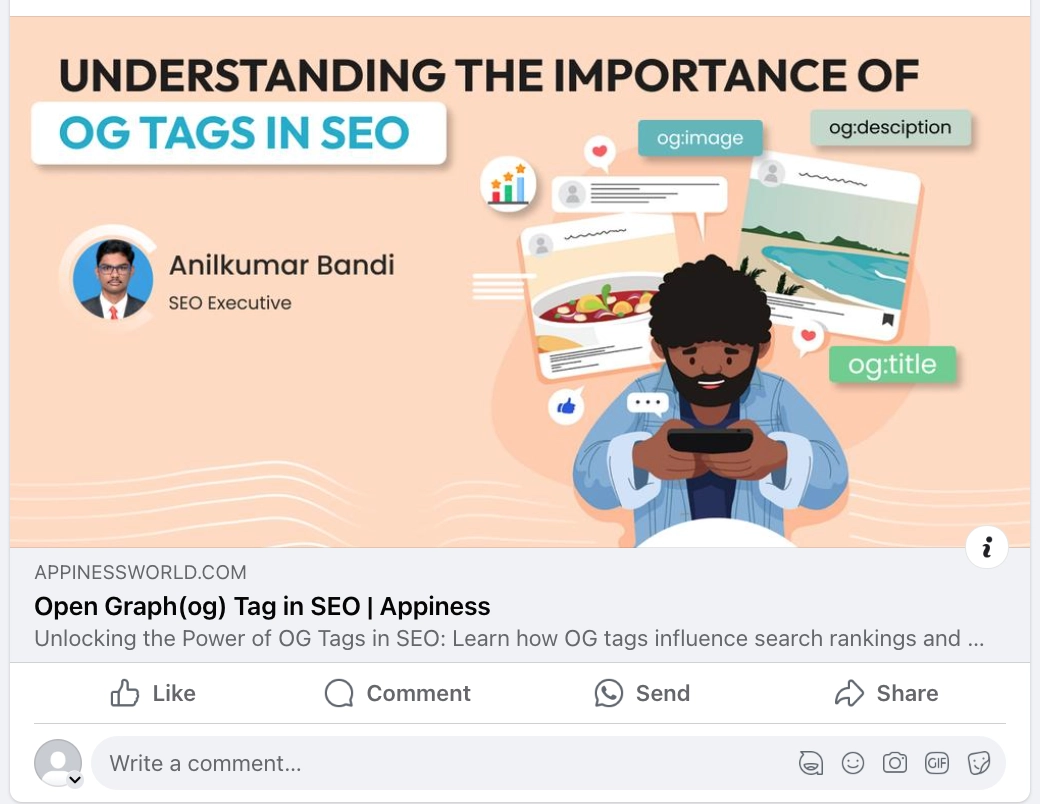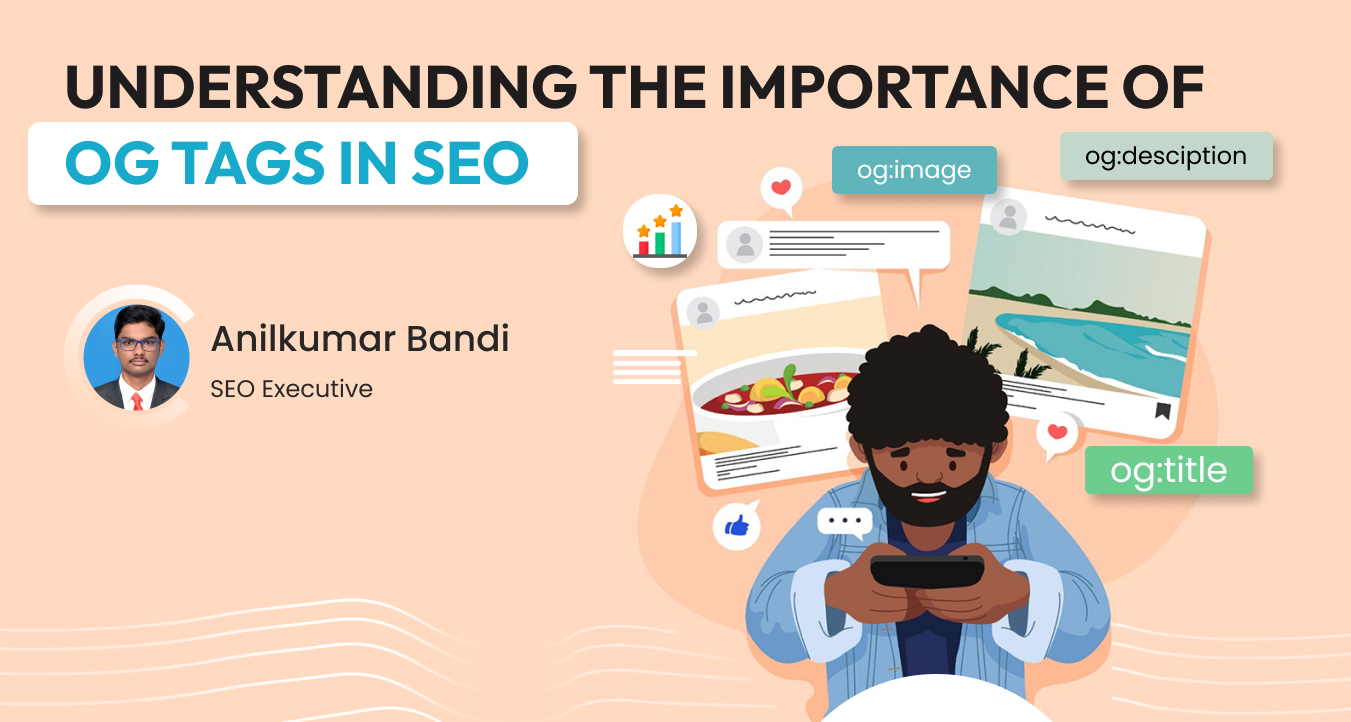Introduction:
In the world of SEO, it's important to do continuous research and implement new things on the page to get a competitive advantage. One thing that many people don't pay much attention to is OG tags but can be really helpful in SEO. These highly impactive tags play a crucial role in boosting your website's visibility, and click-through rates on social media platforms. In this blog, we'll delve deep into the world of OG tags, and know their significance in enhancing your SEO strategy.
What are OG Tags?
OG tags or Open Graph tags, are essentially technical instructions embedded in webpages. These instructions control how information is presented when the webpage is shared on social media platforms like Facebook or LinkedIn.
Types of OG Tags:
- og:title: This tag defines the title of your content. It's the first thing users see when your link appears on social media or search results.
- og:description: Responsible for providing a short description of the page content, the og: description tag helps you to attract users to the page.
- og:image: A picture is worth a thousand words, and this tag allows you to specify the image that accompanies your link, making it visually appealing.
- og: URL: This tag defines the canonical URL of the page, ensuring consistency in link presentation.
Meta Tags vs. OG Tags
While both meta and OG tags offer metadata to describe your web content, OG tags stand out due to their focus on enriching the social sharing experience. Unlike meta tags, OG tags are tailored to optimize how your content appears when shared on social media platforms, making them an invaluable asset in modern SEO.
The Role of OG Tags in SEO
- Enhancing Social Media Sharing
OG tags play an important role in showing shared page link data in a structured way on social media. They control the title, description, and image that accompany your links, ensuring that your shared content is as captivating as possible.
- Improving Click-Through Rates (CTR)
A compelling title, a well-crafted description, and an eye-catching image, all managed by OG tags, can significantly boost your click-through rates. By optimizing OG tags, you can maximize your CTR, leading to increased organic traffic.
- Search Engine Visibility
While OG tags are primarily designed for social media, they indirectly benefit your website's search engine visibility. When users engage with your content on social platforms, it sends positive signals to search engines, indicating the content's relevance and quality. This will help, your content likely to rank higher in search results.
- Cross-Platform Consistency
OG tags ensure consistency in how your content appears across various social media platforms.
OG Tag Markup in HTML
Proper implementation of OG tags requires adding specific HTML markup to your web page head section. Ensure that each tag is correctly defined to reap the full benefits.
- Mobile Responsiveness:
In an era of mobile dominance, make sure your OG tags are optimized for mobile users. Test how your content appears on both desktop and mobile devices to guarantee a seamless experience.
- Debugging and Validation:
Regularly test your OG tags using Facebook's Open Graph Debugger or other similar tools to ensure they display as intended. Validation and debugging prevent issues that could negatively impact your SEO efforts.
Here's an example of how the basic OG tags should look in your HTML code:

Optimizing Your OG Tags
Here are some of the best practices to optimize your OG tags for maximum impact:
1. Compelling Titles:

Create clear, catchy, and engaging titles that exactly reflect your content. Aim for around 60 characters to ensure the full title displays in social media previews as shown in the above image.
2. Catchy Description:
Write informative description of your content, ideally between 120-160 characters. Use keywords naturally according to user interest and intent this will help in improving clicks to the page.
3. Eye-Catching Images:

Choose high-quality, relevant images that visually represent your content and stand out in social media feeds.
Conclusion:
In conclusion, OG tags may be small pieces of code, but their impact on SEO is substantial. By understanding and implementing these tags effectively, you can elevate your website's visibility, engagement, and ultimately, your success in the digital world. Appiness, an SEO company in Bangalore will help you in expanding the audience for your company's website.




